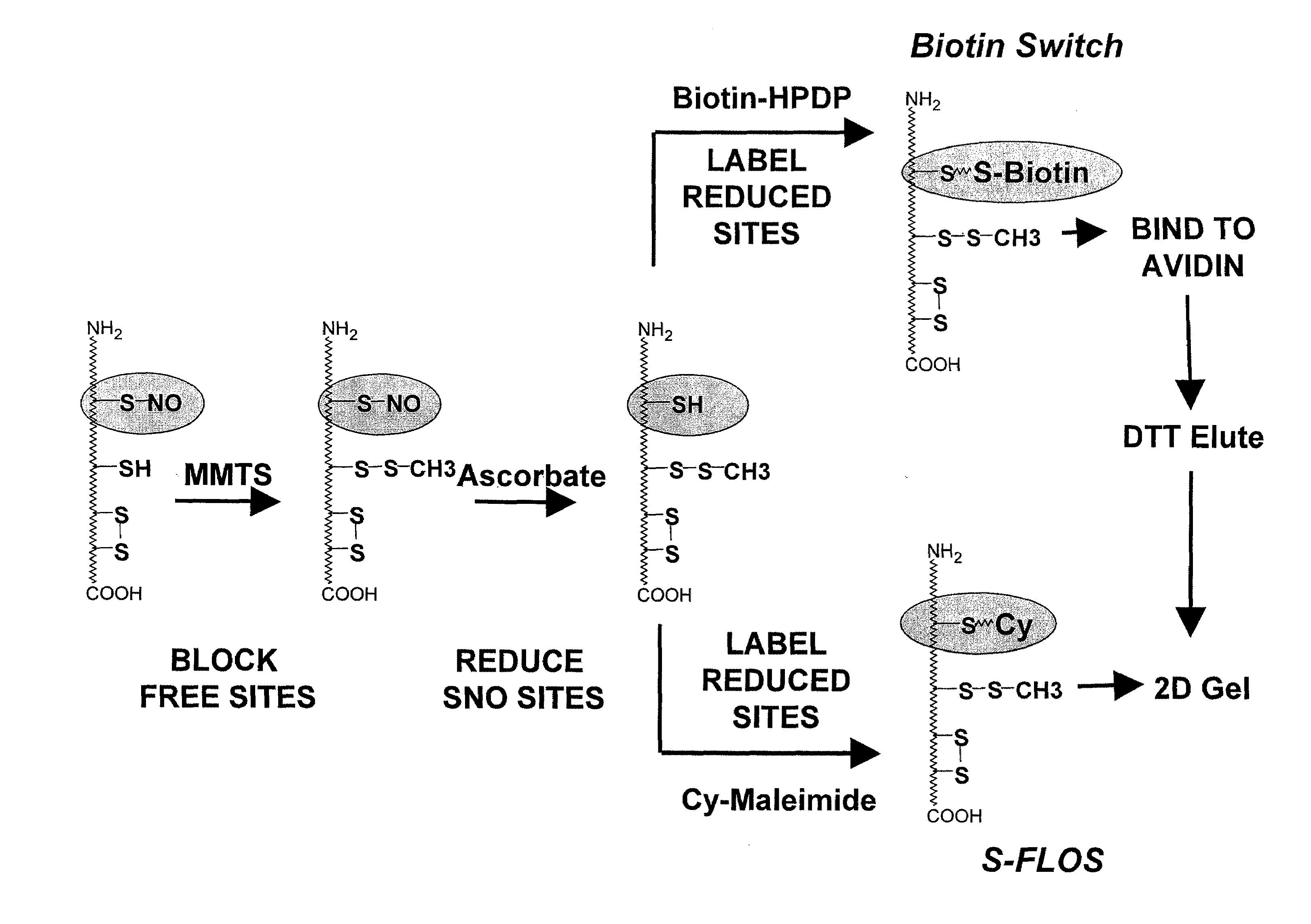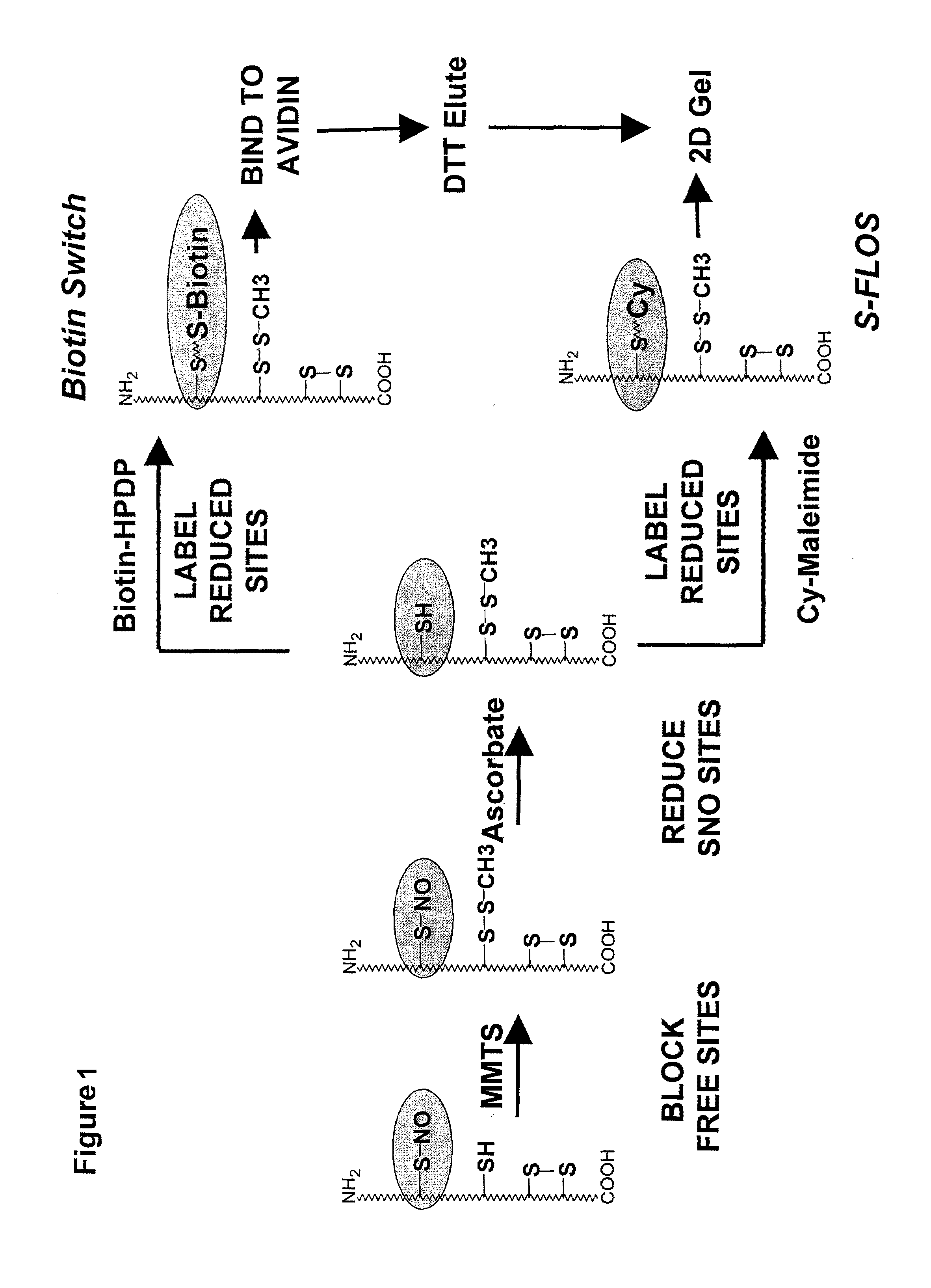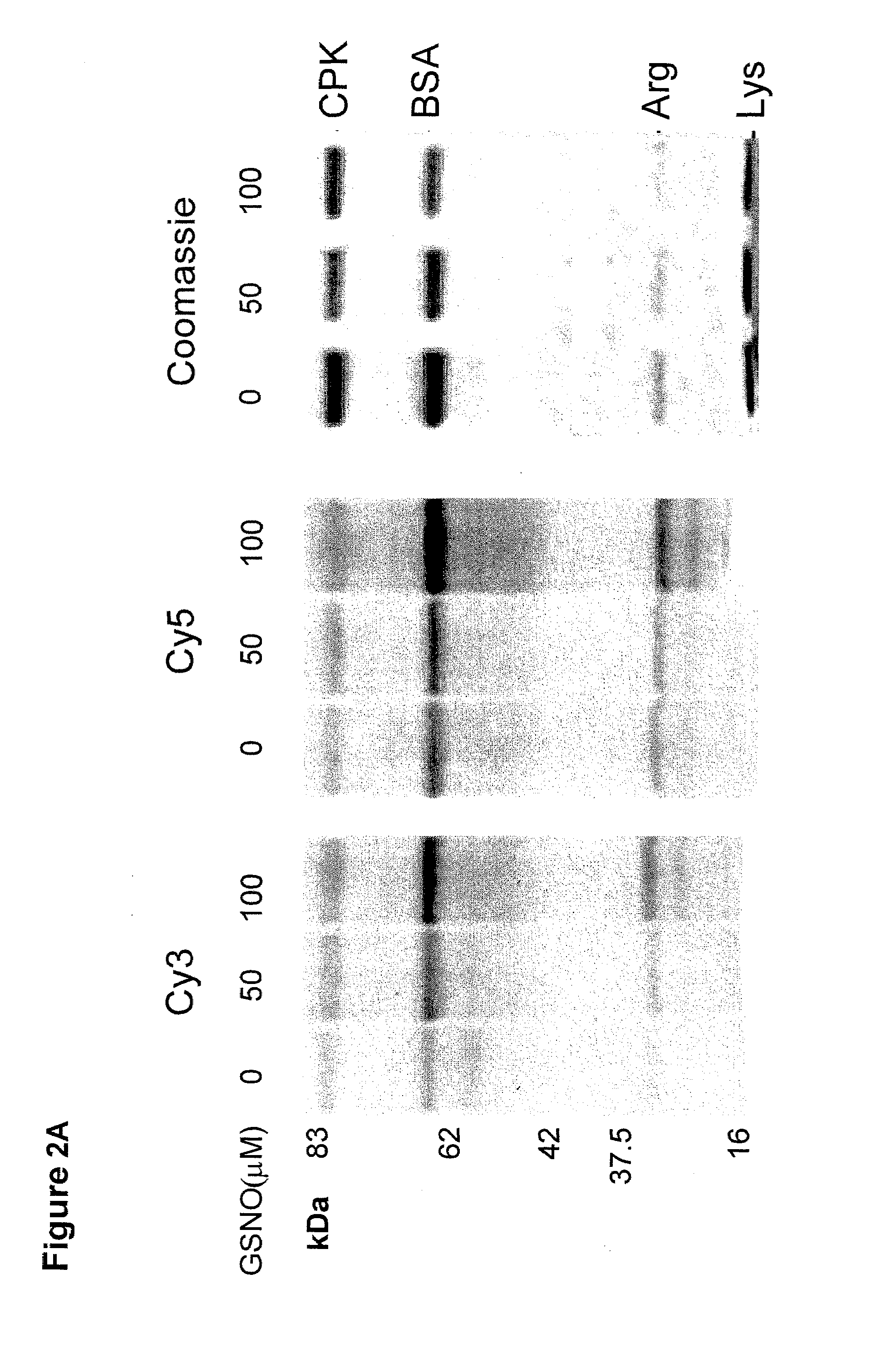Selective fluorescent labeling of s-nitrosothiols (s-flos): a novel method for studying s-nitrosylation
a s-nitrosylation and fluorescent labeling technology, applied in the field of selectively labeling s-nitrosylated proteins, can solve the problems of incompatibility, indirect comparison of relative changes in s-nitrosylation between samples, and inability to compare the relative changes of s-nitrosylation, so as to reduce false positives
- Summary
- Abstract
- Description
- Claims
- Application Information
AI Technical Summary
Benefits of technology
Problems solved by technology
Method used
Image
Examples
Embodiment Construction
Definitions
[0032]By “alkylthiolating agent” is meant an agent that forms alkylthiol groups when reacted under suitable conditions with free thiol groups. Alkylthiolating agents contain straight or branched chain lower alkyl (C1-C6) groups that may be derivatized or functionalized, and may contain regions of unsaturation, for example MMTS. The blocking agent is preferably removed from the test sample prior to the step of the detectable tagging. MMTS, for example, can be removed by acetone precipitation (MMTS remains in the supernatant) or by subjecting the test sample to a spin column or spin filter.
[0033]Unless indicated otherwise by context, by “sample” or “test sample” is meant any sample which may be suitably tested using the methods disclosed herein. Test samples can be e.g. in the form of any biological sample, for example, crude, purified or semipurified lysates of tissues that potentially comprise nitrosylated proteins, e.g. brain, peripheral nerve, muscle, blood vessels, blo...
PUM
| Property | Measurement | Unit |
|---|---|---|
| time | aaaaa | aaaaa |
| time | aaaaa | aaaaa |
| pH | aaaaa | aaaaa |
Abstract
Description
Claims
Application Information
 Login to View More
Login to View More - R&D
- Intellectual Property
- Life Sciences
- Materials
- Tech Scout
- Unparalleled Data Quality
- Higher Quality Content
- 60% Fewer Hallucinations
Browse by: Latest US Patents, China's latest patents, Technical Efficacy Thesaurus, Application Domain, Technology Topic, Popular Technical Reports.
© 2025 PatSnap. All rights reserved.Legal|Privacy policy|Modern Slavery Act Transparency Statement|Sitemap|About US| Contact US: help@patsnap.com



